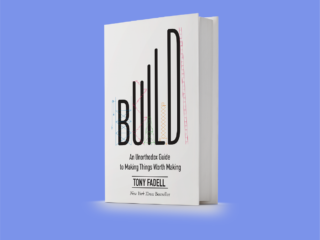What DJing and UX Design have in Common.
Mixing in one of my favourite bars in Berlin with a good friend!
I moved to Berlin in 2015 and went through my rite of passage like every good expat here desires – I learned how to Dj. I especially become interested in collecting and mixing records. What I love about it is the realness of the object in your hand, rather than owning a track as a .mp3 file. By owning records you begin to identify tracks with the colours and art that are on the covers. You start to recognise genres through their artistic patterns and styles. When placed on the turntable, you develop an intuitive feeling for the record spinning around. Your muscles sense the timing and rhythm of the record’s speed in relation to your touches. It truly is a beautiful sensation (when you get it right).
Now records and UX design might seem like complete opposites – but the truth is that there is a lot of overlapping competencies. In fact, the more I get my hands dirty in UX Design the more I’ve noticed how my interest in djing is facilitating and dare I say even improving my UX skills.
So that you don’t think I am a crazy, let me explain to you why…

Playing at Griessmühle in Berlin during the day for their market
1. Know who you are creating for!
DJing and in particular mixing records requires a strong sense of rhythm and timing. DJs must be able to beatmatch and mix tracks seamlessly in order to create a cohesive and enjoyable musical experience. Mixing two tracks together that you haven’t tried before, in a crowded, noisy environment where everyone is watching you, can be daunting to say the least. Would you ship a product or feature without ever validating or testing it? The feelings for a dj or designer are the same. How will the people respond to it? What happens if it does not work? I must stay agile. Understanding rhythm and timing is essential in UX as much as in djing. Designers must start with customer journeys, UX Research, and prototypes in order to be able to anticipate how users will interact with the products. Much like testing a transition at home or mixing in front of a few friends in a bar – User testing prototypes before a release helps a designer create intuitive, user-friendly interfaces that flow smoothly and make sense.
Mixing around bars in Berlin
2. Agility is a key success factor
Now I want to dig a little bit deeper into the concept very briefly mentioned on the left – staying agile. DJing requires a high degree of creativity, the ability to think on one’s feet and come up with solutions fast. DJs must be able to read the room and adjust their sets in real time to keep the crowd engaged and follow them through the various stages of energy and emotions. It can happen that you misread the crowd and play a track that does not get the response you were hoping for (it has happened to me many times and it is a feeling I do not wish for anyone!). The crowd will not hate you for it – as long as you quickly turn it around and understand their needs. If not, they’ll simply leave the floor. This same kind of agile, creative thinking and adaptability is an essential skill for all product designers. It is a designer’s job to facilitate the process and come up with innovative solutions to complex problems. Pivoting and adjusting the approach to match the ever changing needs of users is part of the product’s lifecycle.

Prepping for an online publication mix - It can get messy!
3. Trust the process
A set, just like a product, has a lifecycle. When you are playing records you only have the vinyl and its cover/sleeve. You must manually organise the records and tag the records in a way that makes sense – mood and genre wise. Giving a structure to the records helps you to follow the theoretical lifecycle of a set – the beginning, middle and end. I personally like to organise my records based on vibes – setting the atmosphere at the beginning, building the energy and excitement in the middle, and finally the end where you can either close it softly or leave the crowd wanting more. The art of DJing requires a deep appreciation for details and an understanding of how different elements work together to create a cohesive whole. This same attention to details and the ability to see the different stages of the lifecycle and how different design elements work together is required of a designer. Ideation and conceptualisation sets the tone for the entire product. During product development designers can refine and iterate on the product based on user feedback until the product market fit is right. The interesting difference though is the timing. The life of a set is measured in a matter of hours, whereas the lifecycle of a product takes years to grow through – the abilities needed are the same, just at a different pace.

After moving into my new apartment - first thing first, setting up the records!
4. Building and adapting your network
I want to dig a little deeper into the concept of life and growth. Imagine you are a founding designer for a small start up. You begin to scale and your Weekly Active Users (WAU) goes from the hundreds – to thousands – to hundreds of thousands. What works for 100 WAU will be considerably different to what works for 100,000 WAU. Is this not the same for a set? Playing for friends at home, to 10 people in a bar, to hundreds of people in a club or thousands in a festival. What works for your friends at home, might get you kicked-off stage at a festival. It goes for both – the bigger the network, the more needs change. What I am referring to is The Cold Start Problem – which is also a must-read by Andrew Chen. The Cold Start Problem refers to the challenge of building a network effect for a new product or service. In the case of a DJ set, the Cold Start Problem relates to the idea of building a crowd and creating a vibe in a room that may not be full yet. Just as a DJ must adapt their set to various sized crowds that emit different energies, a designer must adapt their product to build a user base and must evolve with the users to create a network effect. This can involve leveraging early adopters, focusing on a specific niche market, and creating a buzz around the product through marketing and public relations efforts.
While it may seem like there is little connection between records and UX design, these fields do share many transferable skills and qualities. Unfortunately, I have experienced first hand how it is to misread a crowd. I had to quickly adapt and find a solution to the problem and match the needs of the audience. Organising my records in such a way that I can smoothly move through the process of the music-set lifecycle, helps me to stay agile. In addition, understanding how to bring the audience in to listen to your set is vital for building a crowd and network. What DJs and Designers must learn alike, is to leave their intentions at the door! They are designing a set/product for an audience/users, not themselves.
So, if you’re interested in expanding your UX skills, consider putting on some records – you may be surprised at what you learn!






Leave a Reply